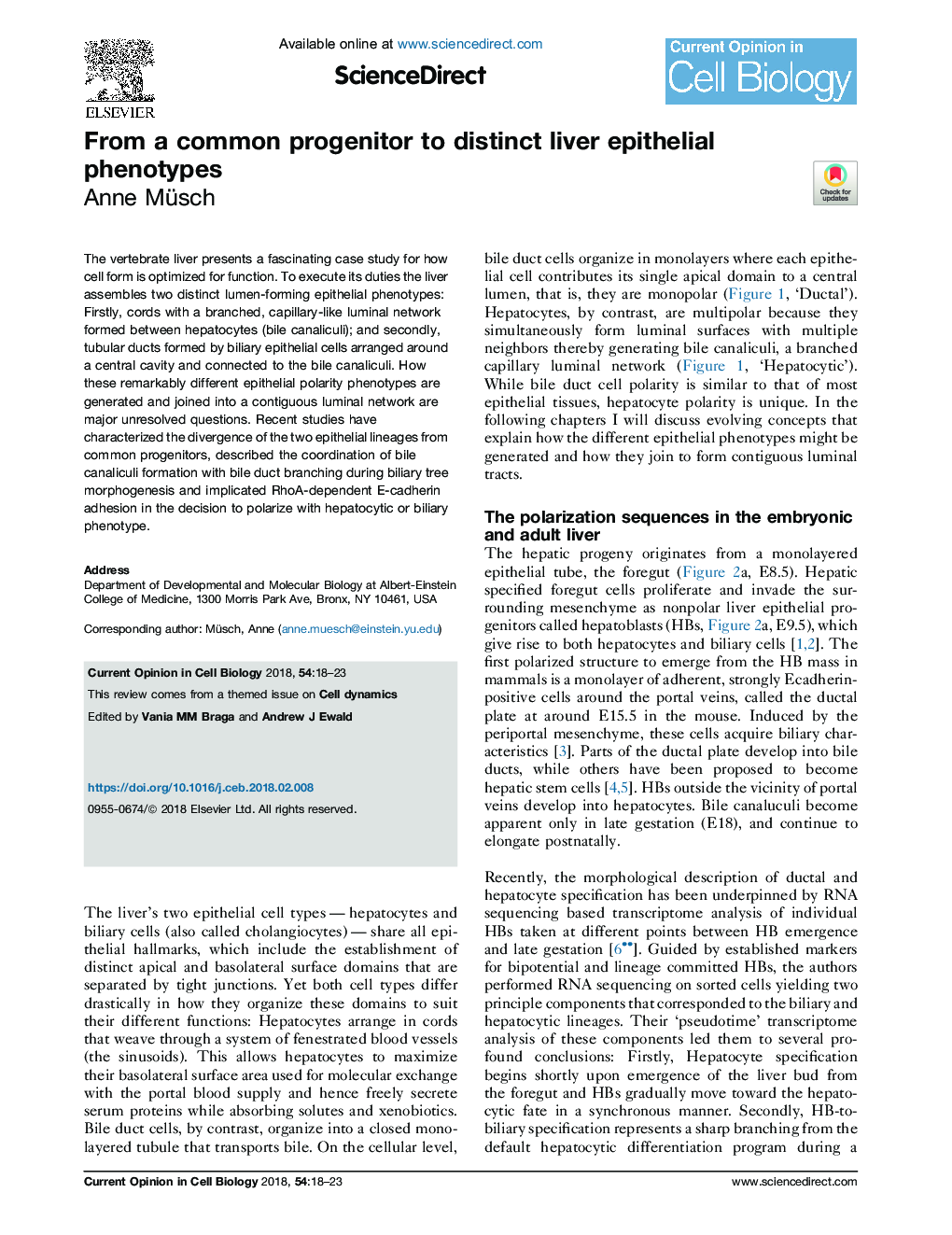| Article ID | Journal | Published Year | Pages | File Type |
|---|---|---|---|---|
| 8464738 | Current Opinion in Cell Biology | 2018 | 6 Pages |
Abstract
The vertebrate liver presents a fascinating case study for how cell form is optimized for function. To execute its duties the liver assembles two distinct lumen-forming epithelial phenotypes: Firstly, cords with a branched, capillary-like luminal network formed between hepatocytes (bile canaliculi); and secondly, tubular ducts formed by biliary epithelial cells arranged around a central cavity and connected to the bile canaliculi. How these remarkably different epithelial polarity phenotypes are generated and joined into a contiguous luminal network are major unresolved questions. Recent studies have characterized the divergence of the two epithelial lineages from common progenitors, described the coordination of bile canaliculi formation with bile duct branching during biliary tree morphogenesis and implicated RhoA-dependent E-cadherin adhesion in the decision to polarize with hepatocytic or biliary phenotype.
Related Topics
Life Sciences
Biochemistry, Genetics and Molecular Biology
Cell Biology
Authors
Anne Müsch,
